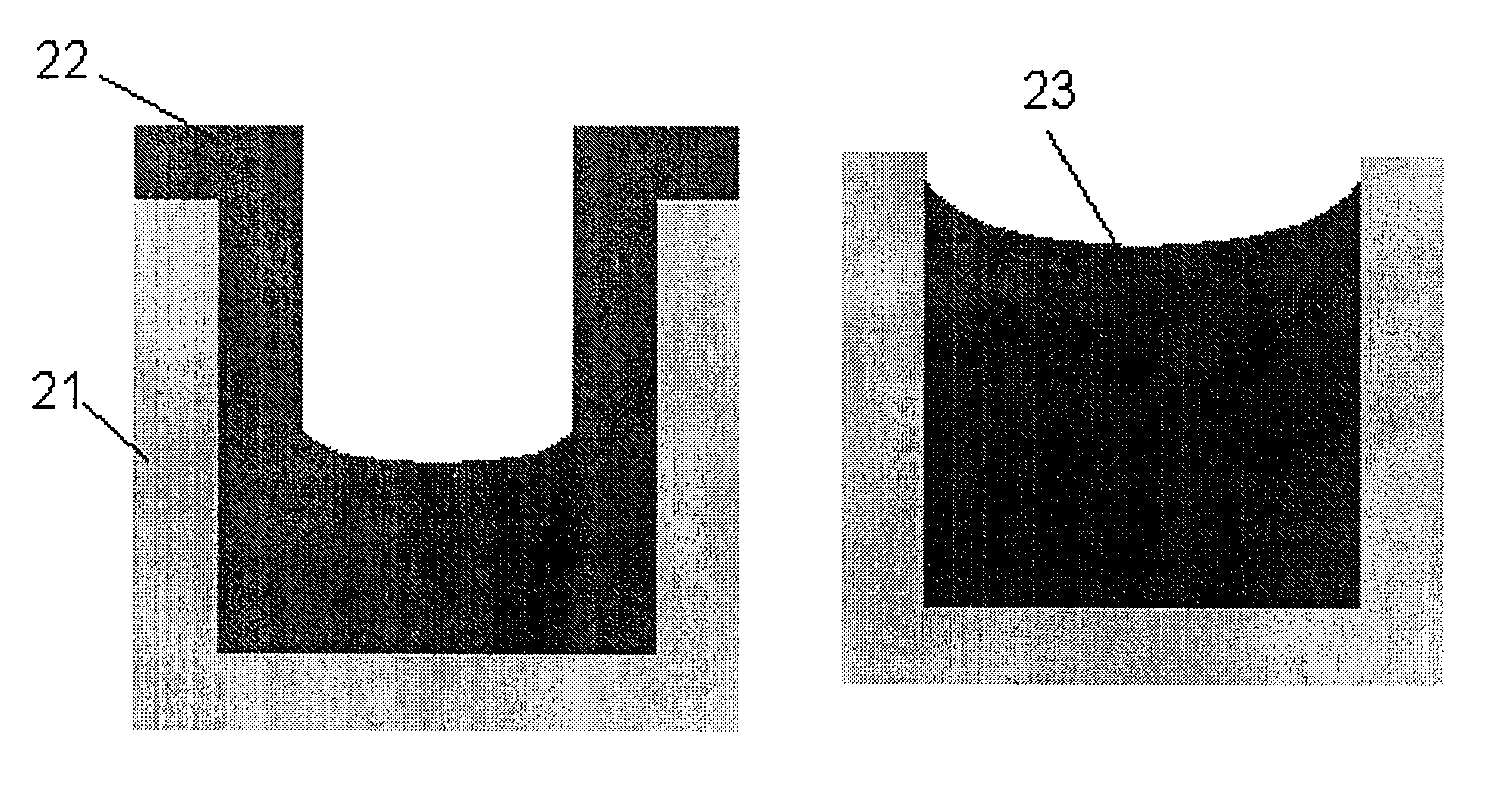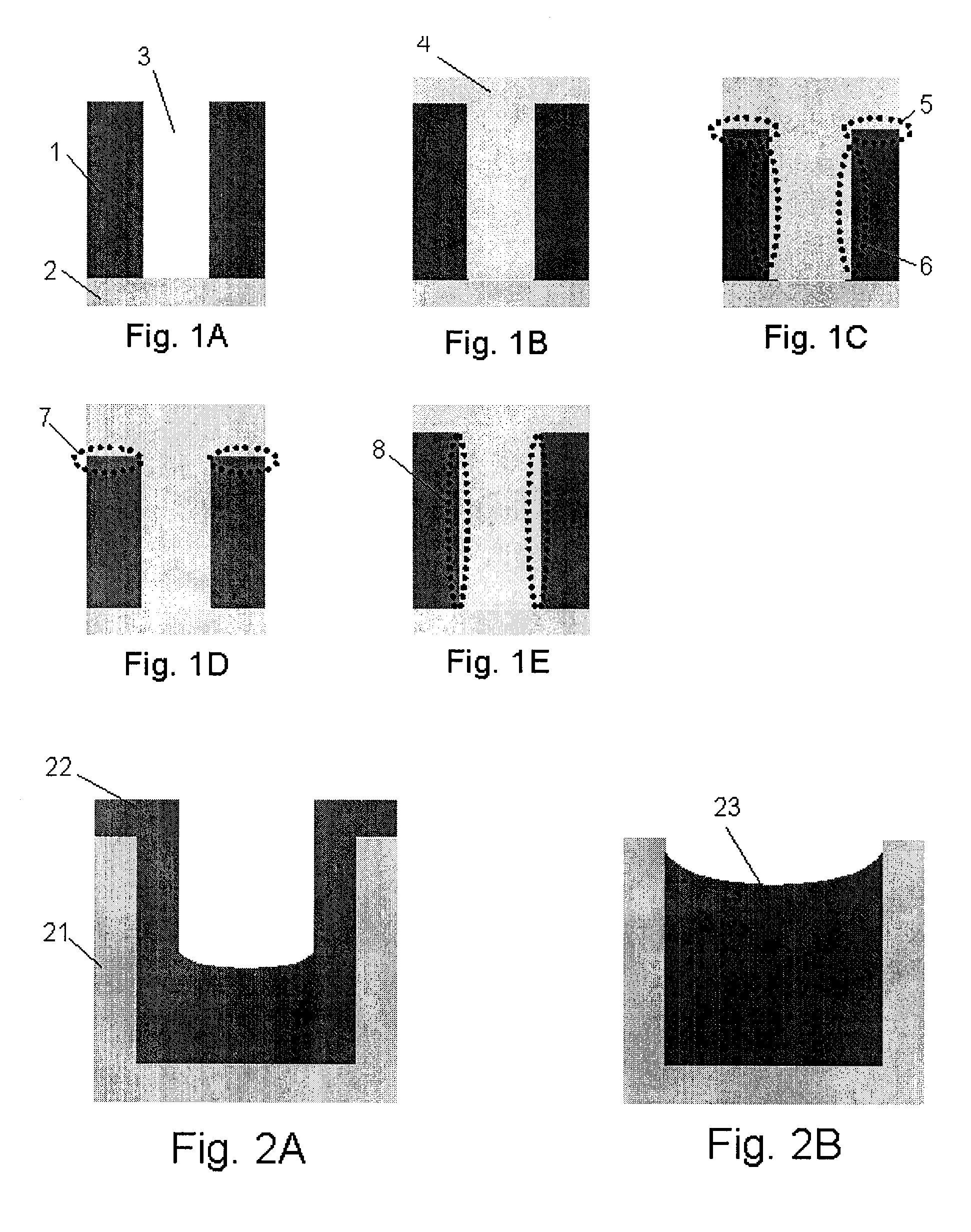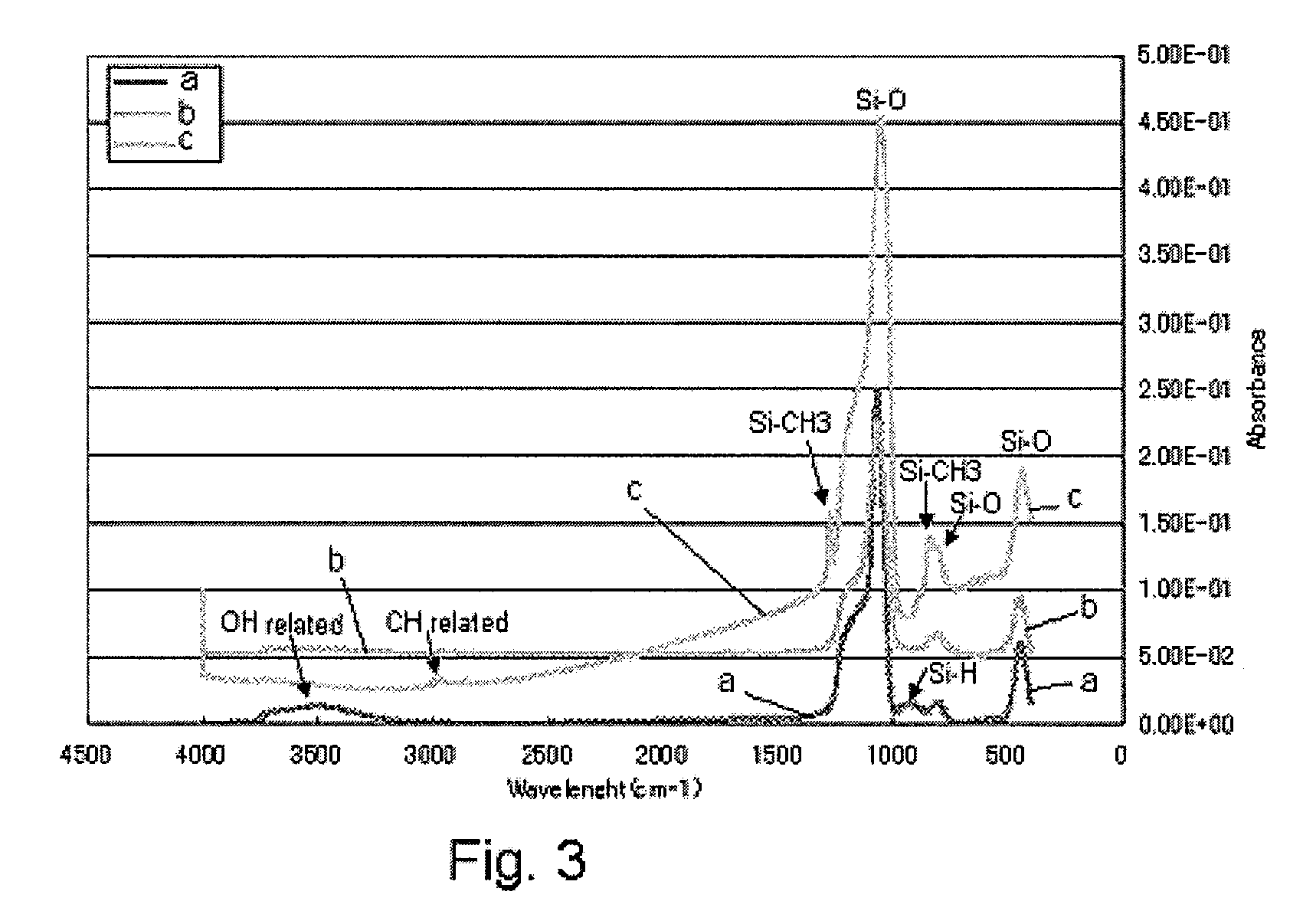Method for depositing flowable material using alkoxysilane or aminosilane precursor
a technology of flowable materials and precursors, applied in the field of semiconductor techniques, can solve problems such as the inability to prevent post-deposition processes completely, and achieve the effects of reducing film shrinkage, improving chemical resistance in trenches, and reducing carbon conten
- Summary
- Abstract
- Description
- Claims
- Application Information
AI Technical Summary
Benefits of technology
Problems solved by technology
Method used
Image
Examples
example 1
[0050]To identify a material that allows for achievement of a Si—O state immediately after deposition without causing carbon impurities from being taken into the film, those that do not directly contain Si and hydrocarbon bond were examined. To be specific, an evaluation was conducted to identify whether the amount of carbon impurities taken into the deposited insulation material having flowability could be reduced substantially based on plasma CVD by using a material whose skeleton is Si—O—CH3 or Si—N—CH3 where oxygen or nitrogen is sandwiched between Si and carbon. For the Si-containing precursors not having Si—C bond used in this evaluation, tetramethoxysilane and hexamethoxydisilane were used. For the Si-containing precursor having Si—C bond, monomethyltriethoxysilane was used. The deposition conditions are shown below.
[0051]
TABLE 2DistanceRFbetweenSusceptorPrecursorHe gasO2 gasPressure(13.56 MHz)electrodesTem.[sccm][sccm][sccm][Pa][W][mm][° C.]tetramethoxysilane5010005026650200...
example 2
[0057]To identify a material that allows for achievement of a Si—O state immediately after deposition without causing carbon impurities from being taken into the film, materials that do not directly contain Si and hydrocarbon bond, or specifically tetramethoxysilane containing O—CH3 and tetraethoxysilane containing O—C2H5, were compared. The deposition conditions are as follows.
[0058]
TABLE 4DistanceRFbetweenSusceptorPrecursorHe gasO2 gasPressure(13.56 MHz)electrodesTem. [sccm][sccm][sccm][Pa][W][mm][° C.]Ttramethoxysilane5010005026650200Tetraethoxysilane5010005026650200
[0059]Results are shown in FIG. 4, which is a FT-IR graph showing the condition of bond in the formed film. In this embodiment, the precursor has a hydrocarbon as the terminal group, where the terminal hydrocarbon is CH3. In addition to CH3, C2H5, C3H7, etc., can be cited as candidate hydrocarbons. As evident from the FT-IR graph in FIG. 4 showing the confirmed condition of carbon content after deposition, adopting CH...
example 3
[0060]To evaluate STI filler oxide films having high-temperature resistance, films were deposited under the process conditions listed below (susceptor temperature: 0° C.).
[0061]In the table, a downward pointing arrow indicates that the immediately overlying entry is carried over to the box containing the arrow.
[0062]
TABLE 5Flow rateO2 flow He flowDischarge Flowabilityof materialrateratePressure13.56 MhzdistancepatternExampleMaterial(sccm)(sccm)(sccm)(Pa)(W)(mm)diagram3-1Hexamethoxydisilane200100026610020B3-2↓↓50↓↓↓↓↓3-3↓↓200↓↓↓↓A3-4↓↓0↓133↓↓B3-5↓50↓↓266↓↓↓3-6Hexaaminodisilane2040↓↓↓↓↓3-7↓2020↓↓↓↓↓3-8Trimethoxysilanol1000↓400↓↓↓3-9↓↓↓↓266↓↓↓ 3-10Hexamethoxydisilane20↓↓↓300↓A
[0063]Additionally, the flowability pattern diagrams indicating in the last column of Table 5 show the results of evaluating chemical resistance in the filled film and pattern based on the Line / Space ratio of 20 / 40 nm, as explained in FIGS. 2A and 2B. In condition A where the viscosity is high (FIG. 2A), flowable ...
PUM
| Property | Measurement | Unit |
|---|---|---|
| Temperature | aaaaa | aaaaa |
| Temperature | aaaaa | aaaaa |
| Temperature | aaaaa | aaaaa |
Abstract
Description
Claims
Application Information
 Login to View More
Login to View More - R&D
- Intellectual Property
- Life Sciences
- Materials
- Tech Scout
- Unparalleled Data Quality
- Higher Quality Content
- 60% Fewer Hallucinations
Browse by: Latest US Patents, China's latest patents, Technical Efficacy Thesaurus, Application Domain, Technology Topic, Popular Technical Reports.
© 2025 PatSnap. All rights reserved.Legal|Privacy policy|Modern Slavery Act Transparency Statement|Sitemap|About US| Contact US: help@patsnap.com



